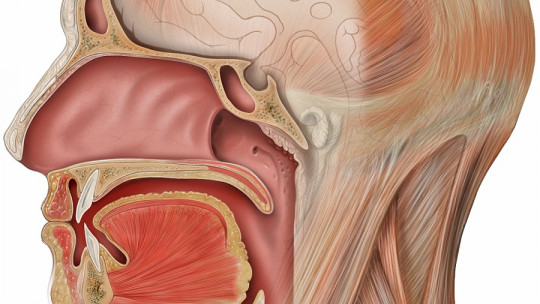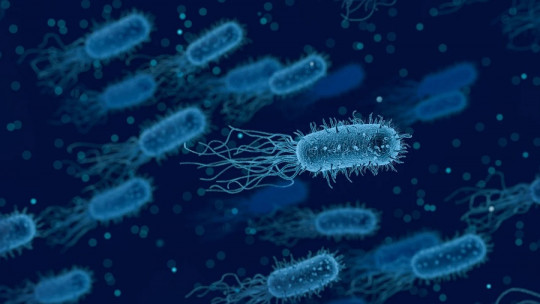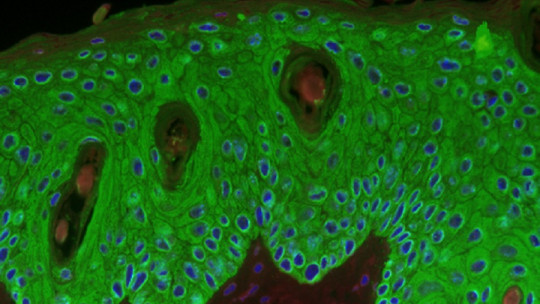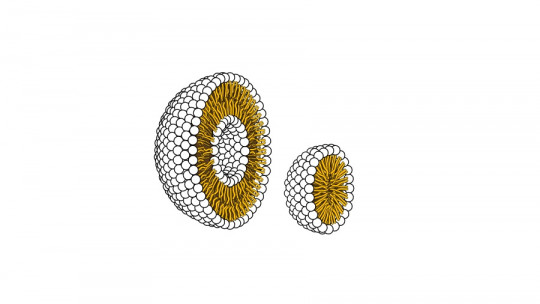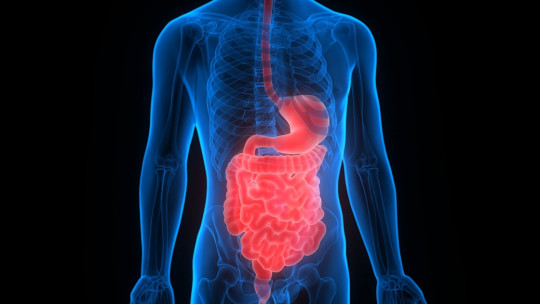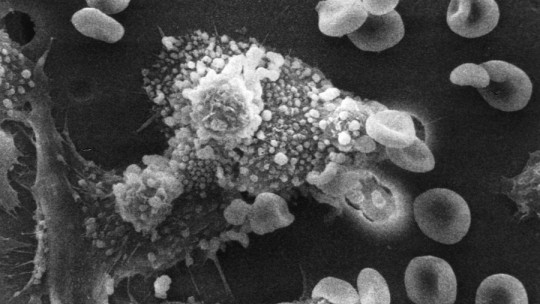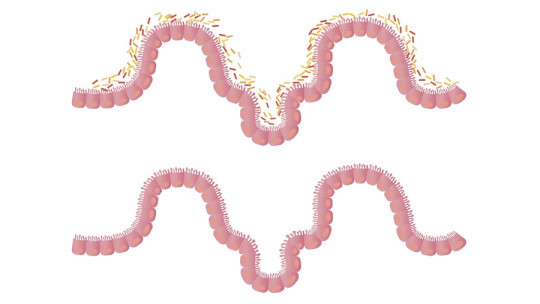On average, an adult human produces 1 to 2 liters of saliva every 24 hours. The most obvious functions of this liquid are the lubrication of food and the oral cavity, but it has many more hidden properties, all of them essential for the survival of the living beings that synthesize it.
For example, saliva contains various compounds with antibacterial properties, in order to prevent colonization of the oral mucosa by unwanted pathogens. Lysozyme is a cationic protein that damages the cell walls of bacteria, rendering the microorganisms inactive. Lactoferrin and the peroxidase enzyme also have similar properties, since they cause the destruction of the harmful microorganism by different mechanisms.
Beyond its clear bactericidal action, saliva also acts as a buffer or pH buffer (helps protect oral tissues from foods that are too acidic or alkaline), participates in the formation of the acquired film and promotes the remineralization of dental structures, among other things. As you can see, the functionality of this fluid encompasses much more than simply softening the bolus.
Based on these premises, we find it of special interest to investigate the structures that allow us to synthesize saliva continuously. Today we tell you everything about the salivary glands and its functionality in the different areas of human physiology.
What are salivary glands?
First of all, it should be noted that Salivary glands are tissues of an exocrine nature, that is, they pour directly onto an internal cavity, the lumen of an organ or the surface of an organism in this case the mouth.
They differ from the endocrine glands in that they do not pour their substances into the bloodstream, as is the case of the endocrine glands with hormones and other compounds of a plasmatic nature.
Classification of its different types and functions
Human beings have three pairs of major salivary glands (one on each side of the face) and about 600-1000 minor glands. The most important at a histological level are those included in these three pairs, which respond to the following designation: submandibular gland (SMG), sublingual gland (SLG) and parotid gland (PG). Next, we will tell you the particularities of each of these tissue formations.
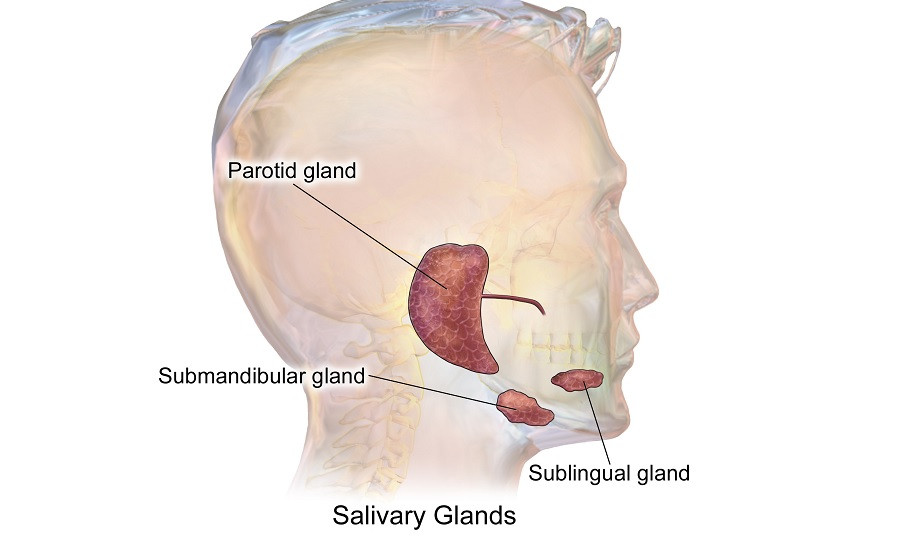
1. Submandibular gland (SMG)
The pair of submandibular glands are located under the floor of the mouth Each of them weighs around 15 grams (approximately the size of a walnut) and contributes to 60% of unstimulated salivary secretion, that is, that portion of the fluid that we synthesize without realizing it and without responding to a specific environmental element. , such as a pleasant smell or the sight of appetizing food.
Each of the two submandibular glands are divided into a superficial and a deep lobe, clearly differentiated by the intersection of the mylohyoid muscle. Salivary secretions are drained to the floor of the mouth through Warthon’s duct, which empties clearly into the sublingual caruncles, located on each side of the frenulum.
2. Sublingual gland (SLG)
The two sublingual glands are the smallest of the essential secretory trio, weighing only about 2 grams , compared to 15 for the submandibular. Furthermore, their structure is much more diffuse and they are not encapsulated, as is the case in the rest of the pairs.
Depending on its size and weight, its salivary production rate is determined. They are responsible for only 3-5% of total saliva secretion, a very small value. They are located just below the sublingual mucosa (hence their name), on the floor of the mouth, resting directly on the anterior lingual surface of the jaw more specifically on the mylohyoid muscle.
These glands drain saliva through 8 to 20 excretory ducts, called the ducts of Rivinus. The largest of them all is the greater sublingual duct (Bartholin’s), responsible for secreting much of the saliva produced by these diffuse (but essential) small glands.
3. Parotid gland (PG)
Without a doubt, the two parotid glands are the queens of salivary secretion and the most important within this entire terminological conglomerate. These are the largest glands, weighing between 14 and 28 grams on average and measuring up to 3.4 centimeters in the ventrodorsal axis. They are the producers of approximately 50% of the total saliva produced by humans that is, from 0.5 to 1 liter for 24 hours, which is said to be quick.
Up to 80% of the glandular body of each of these structures rests on the external part of the masseter muscle, whose main function is to elevate the jaw and allow proper closure of the mouth. The remaining 20% of this structure extends medially through the stylomandibular tunnel, in which there is a ligament (stylomandibular ligament) that is responsible for separating the parotid gland from the submandibular gland, among other things.
This glandular tissue is serous in nature, that is, it focuses on the secretion of polypeptide-type compounds. The cells that make up serous glands (like this one) have characteristic zymogen granules, inactive enzyme precursors The nuclei of these serous cells are rounded, and their cytoplasm has a large amount of rough endoplasmic reticulum (RER).
We are not going to focus too much on the histological section of this gland, as it is too complex. It is enough for us to know a few brief strokes, such as the following: The parotid has four faces: lateral, superior, anteromedial and posteromedial In addition, it has three defined borders, the anterior, medial and posterior. Different structures pass or interact through the parotid, including the facial nerve, the retromandibular vein, the external carotid, the superficial temporal artery and the maxillary artery, among others.
It should be noted that this is the area most prone to the appearance of salivary tumors, due to its size and functionality. Without going further, 85% of salivary gland tumors are located in one of the parotid glands, while sublingual glands only present 1% of neoplasms In any case, up to 80% of these tumor growths are benign and of adequate development and treatment, so they do not pose a danger to the patient’s life.
4. Minor salivary glands
As we have said previously, there are three easily differentiated salivary gland pairs in human oral anatomy: the submandibular, sublingual and parotid glands. Anyway, There are about 600-1,000 glandular structures also in relation to the oral cavity, which cannot be included in any of the three morphological groups previously named We are looking at the minor salivary glands.
These small glandular structures are located under the mucosa of the oral cavity, palate, paranasal sinuses, pharynx, larynx, trachea and bronchi. Anyway, They are much more numerous in the buccal, labial, palatal region and in the lingual tissue They are also known as accessory glands and are made up of small groups of saliva-producing acini.
Altogether, they produce less than 10% of the saliva secreted by a human being in a 24-hour interval. In any case, its operation is essential, since its continuous production allows oral tissue to remain lubricated and healthy. They also promote tissue safety and prevent bacterial infestation, through the production and secretion of bactericidal salivary compounds that we have already described.
Summary
As you can see, covering all of the salivary glands is very simple, since you only need to have a clear central idea: there are three pairs of major salivary glands (submandibular, sublingual and parotid) and about 1,000 small acini distributed throughout the oral tissue. , which are responsible for secreting saliva continuously and uninterrupted throughout the individual’s life.
Saliva is not only essential to soften the bolus during and after mechanical chewing, but it also prevents infections, helps with dental repair and maintenance, and acts as a buffer for acidic and alkaline pH and many other things. Without a doubt, it is clear to us that each and every one of the fluids secreted by human beings has a specific and irreplaceable function.


